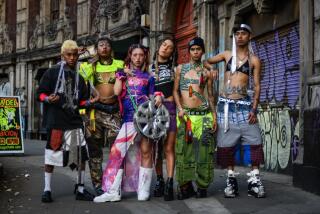‘Blaxicans of L.A.’ Instagram project comes to life as an exhibit in Highland Park
- Share via
Growing up, Walter Thompson-Hernandez navigated Los Angeles with a fragmented lens. Being “blaxican” -- his father was African-American and his mother was Mexican -- he had trouble finding a community that represented his whole self.
So he set out to find one. Last summer, he launched an Instagram project called “Blaxicans of L.A.” based off of his research on multiracial identity. Starting Saturday, the project will come to life as an exhibit at Avenue 50 Studio in Highland Park. It will run until March 5.
“It brings another dimension to the project that couldn’t have existed in the physical form,” he said.
The exhibit will feature about 30 images of individuals he photographed and interviewed. They shared stories of self-discovery, identity issues and colorism among family and friends. Many of his subjects faced the trouble of having to “prove” their Latino side to others, as they are often racialized as black, he said.
Thompson-Hernandez’s experience was the opposite. Growing up in Huntington Park, a predominately Latino area, he often found himself having to prove his “blackness.”
Though sometimes uncomfortable, Thompson-Hernandez says these stories can be “healing” for people who have similar experiences. Since launching the project, he has received numerous emails from parents of blaxican children who now say they have a platform for discussing their children’s mixed realities. “There’s an intersection of experiences and of interests that really embody who we are,” he said.
Blaxicans represent L.A.’s history and its future, he said. Of the 44 settlers who founded Los Angeles -- and who came from what is now Mexico -- more than half were of African descent.
“People who could’ve potentially looked like me,” he said. “In a way, we are the children of L.A.”
As cultures continue to merge in Los Angeles and beyond, Thompson-Hernandez wonders what the future of this country will look like.
“And more importantly, how will we treat each other based on these phenotypes?”
Follow @ebonymarieb on Twitter.
Editor’s note: The writer of this article is featured in the exhibit.
More to Read
Sign up for Essential California
The most important California stories and recommendations in your inbox every morning.
You may occasionally receive promotional content from the Los Angeles Times.










